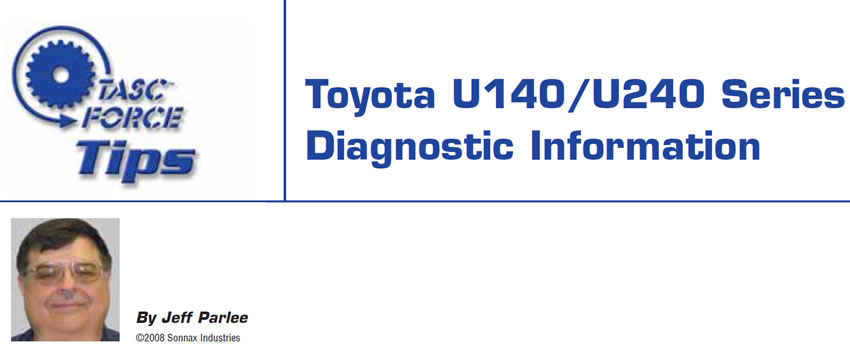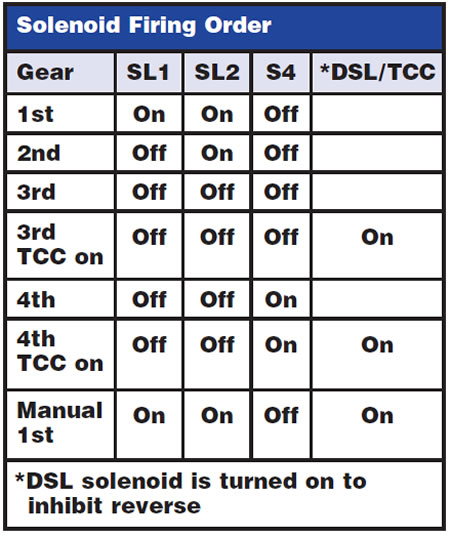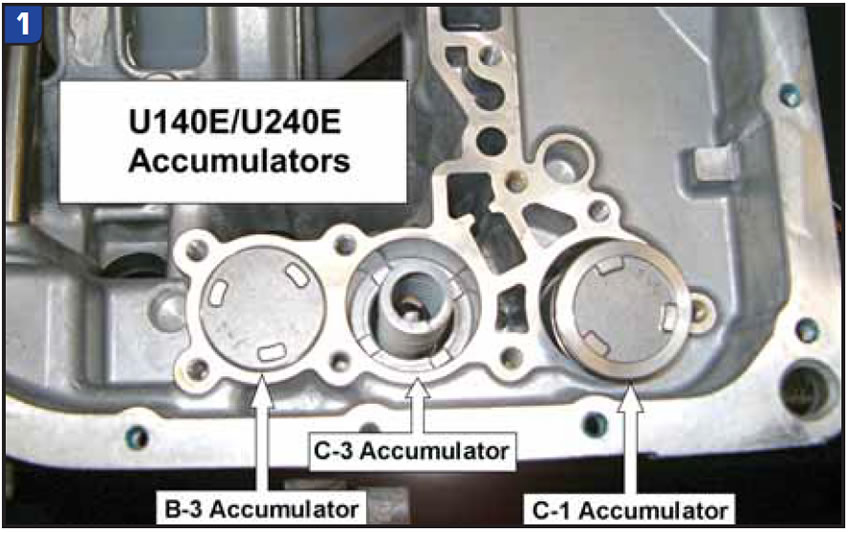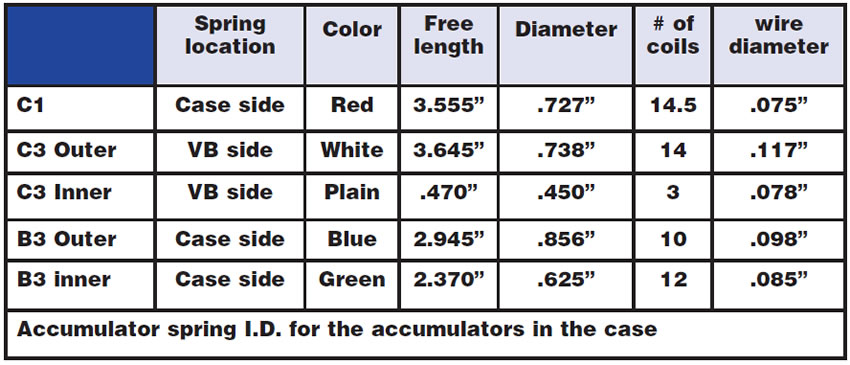
TASC Force Tips
- Author: Jeff Parlee
This transmission has some unique problems that can cause you to scratch your head. Add the lack of information available from the manufacturer and your frustration level can skyrocket. Here are some common problems and suggestions on how to resolve them.
Binding on the 1-2 shift
This is a common complaint with this transmission. A quick way to determine whether you have a valve-body/solenoid problem or a faulty ECM is to see whether you have reverse with the electrical connector disconnected from the transmission. If you do NOT have reverse, suspect the B2 control valve stuck on or pushed to the apply position by cross leaks, or a DSL solenoid stuck open. If the transmission engages into reverse, suspect a faulty ECM.
Here’s why: The DSL solenoid, also known as the TCC solenoid, doesn’t come on just for lockup. It is also energized in manual low and is used to inhibit reverse. The DSL solenoid is normally closed. When energized, it allows oil pressure to stroke the B2 control valve, apply the B2 clutch in manual low and block oil to the B2 clutch in reverse. If the DSL solenoid is stuck open in drive, the B2 clutch will apply in 1st as it does in manual low. When the 1-2 shift occurs with the B2 clutch applied, one too many clutches are applied and the transmission binds up. If the DSL solenoid is stuck open when reverse is selected, the B2 control valve will block oil to the B2 clutch, inhibiting reverse.
The engine and transmission are controlled by the ECM (engine control module), more commonly known as the PCM (powertrain control module) in these units. It is not uncommon for 2001-03 RAV4 vehicles to have a faulty ECM. Many times the vehicle will have binding or harsh shifts, often accompanied by codes P0750, P0753, P0755, P0758 and P1760. For more information, see Toyota bulletin # TC002-06 with an issue date of March 3, 2006.
Before you order a new ECM, be aware of the following: Keep in mind that adaptive strategy is used to control this transmission and that the learned adapts must be reset to avoid damage to the transmission after an overhaul or valve-body replacement. Remember that the reset procedure will reset all of the ECM learned adapts, not just the transmission adapts. The Toyota factory scan tool is capable of resetting the ECM adapts.
Resetting the adapts should be followed by performing a re-learn procedure. Bring the transaxle to operating temperature. Next, drive the vehicle at light, steady throttle through all the shifts and repeat until the shifts feel normal. You may find that resetting the shift adapts will correct any binding on shifts without having to replace the ECM. I would highly recommend that you perform the ECM reset before replacing the ECM.

2-3 slip; flared/delayed or no reverse
The direct-clutch sealing rings wear into the ring grooves in the cover, and the direct drum is frequently ring-grooved. Proper clearance between the sealing ring and the ring land is 0.003 to 0.005 inch. Direct drums with damage where the sealing rings ride should be replaced. Do NOT try to salvage the drum by sanding out the damage.

Another cause of pressure loss to the direct clutch is a missing or incorrectly positioned rubber-washer-type seal between the case and the rear cover.

Slips in reverse or no reverse
In addition to the direct-clutch problems, a DSL solenoid that is stuck on, a B2 control valve that is stuck in the stroked position, or missing or damaged B2 seals between the valve body and case can cause reverse to be delayed, slip or be missing altogether.
- Various shift- and engagement-feel concerns
- Various shift- and engagement-feel concerns can result from accumulator-spring mix-up. The chart and photo above show the location, color and dimensions of each accumulator spring and the location of each accumulator in the case.
- The C1 accumulator is for neutral to drive engagement feel.
- The C3 accumulator is for the 3-4 shift feel.
- The B3 accumulator will affect the 4-3 downshift feel.
As always, information is the key to fixing it right the first time.

Jeff Parlee is director of product support at ValveBody Xpress and a member of the Sonnax TASC Force (Technical Automotive Specialties Committee), a group of recognized industry technical specialists, transmission rebuilders and Sonnax Industries Inc. technicians.













